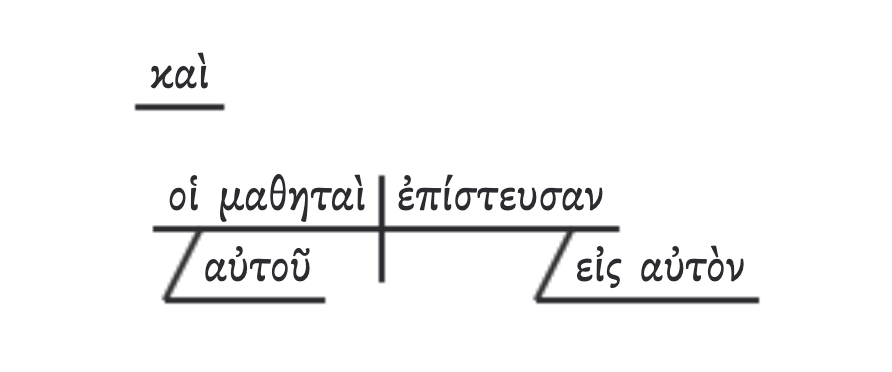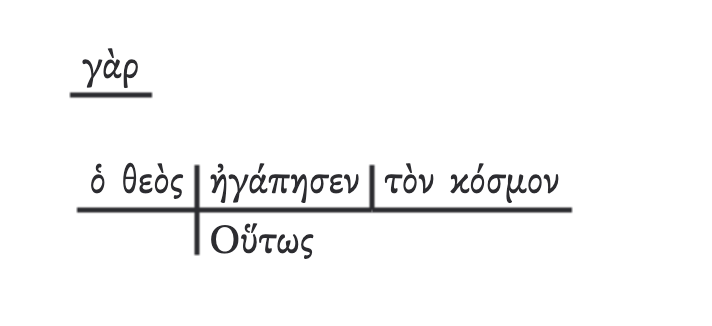Lesson 4 | Aorist Indicatives
[3] 1st Aorist Active Indicatives
Now it is time to turn our attention to first aorist indicatives. Remember, first and second aorist indicatives are two different ways to form the same tense-form. These are all aorist indicatives. Thus, they communicate past time and perfective aspect. First and second aorists differ from one another only in how they form. Whereas second aorists use a distinct aorist stem, first aorists use a σα tense former. Let’s start by learning about first aorist active indicatives.
First Aorist Active Indicatives
Let’s look at the four key features for first aorist active indicatives:
Now, let’s see how these four key features look by comparing λύω as an imperfect active indicative and an aorist active indicative:
| λύω in the active indicative | |||||||||
| Imperfect | 1st Aorist | ||||||||
| Singular | First | ἔλυον | ἔλυσα | ||||||
| Second | ἔλυες | ἔλυσας | |||||||
| Third | ἔλυε(ν) | ἔλυσε(ν) | |||||||
| Plural | First | ἐλύομεν | ἐλύσαμεν | ||||||
| Second | ἐλύετε | ἐλύσατε | |||||||
| Third | ἔλυον | ἔλυσαν | |||||||
Note:
- The Augment: Since aorist indicatives communicate past time, first aorists have the augment.
- The Stem: First aorist stems are usually the same or quite similar to present stems for the same verb.
- Tense-Former: First aorists use the σα tense-former. However, note that the σα changes to σε in the third person singular: ἔλυσε(ν).
- Ending: First aorist active indicatives use the past active verb pattern with two changes:
- Do you remember what we discussed in the last step regarding ἔγνω? The verb pattern endings are actually made up of two parts. The first letter is the vowel that connects the ending to the stem, and the second part is the remaining letters. The α from the σα tense-former replaces the connecting vowel in the first part of the ending. That’s why, for example, we get -σατε rather than -ετε in the second plural.
- Note that the pattern changes slightly for the first person singular. For imperfects and second aorists, the first person singular and third person plural share the same ending: -ον. For first aorists, on the other hand, the first person singular has no ending: ἔλυσα.
Practice
Use this quizlet to practice parsing λύω as an aorist active indicative. Take time to become familiar with the four key features in each form.
Scheming σ
Before moving on, there’s one more point to review from Greek II. Do you remember scheming σ? σ loves to mess other letters up. Since first aorists use the σα tense-former, scheming σ will change and alter letters from the stem. Thus, you need to remember the rules we learned about how scheming σ changes other letters:

Examples from the Greek NT
καὶ ἐπίστευσαν εἰς αὐτὸν οἱ μαθηταὶ αὐτοῦ. And his disciples believed in him. —John 2:11

ἐπίστευσαν is the main verb in this clause. Let’s look at its four key features:
ε+πιστευ+σα+ον
[Augment]
[Stem]
[Tense-Former]
[Ending]
From these four key features, we can parse ἐπίστευσαν as an aorist, active, indicative, third person, plural from πιστεύω. To communicate its past time and perfective aspect, we can translate it as “they believed.”
οὕτως γὰρ ἠγάπησεν ὁ θεὸς τὸν κόσμον, For God so loved the world... —John 3:16

Let’s focus on the four key features for our main verb, ἠγάπησεν:
ε+αγαπα+σα+ε(ν)
[Augment]
[Stem]
[Tense-Former]
[Ending]
With these four key features, we can parse ἠγάπησεν as an aorist, active, indicative, third person, singular from ἀγαπάω: “He loved.” Now, let’s note two further points:
- Do you remember why the augment is an η instead of an ε? Since αγαπάω begins with a vowel, the augment lengthens the first letter α into an η.
- Pay attention to how scheming σ affects contract verbs. Remember, contract verbs are verbs with stems that end with an extra vowel like ἀγαπάω, ποιέω, or πληρόω. The σ from the tense-former causes that vowel to lengthen. That is why we end up with an η rather than an α in front of the tense-former: ἠγάπησεν.
Parsing Practice: First Aorist Active Indicatives
Now that you have learned the four key features for first aorist active indicatives and seen a couple examples, let’s practice parsing first aorist active forms: